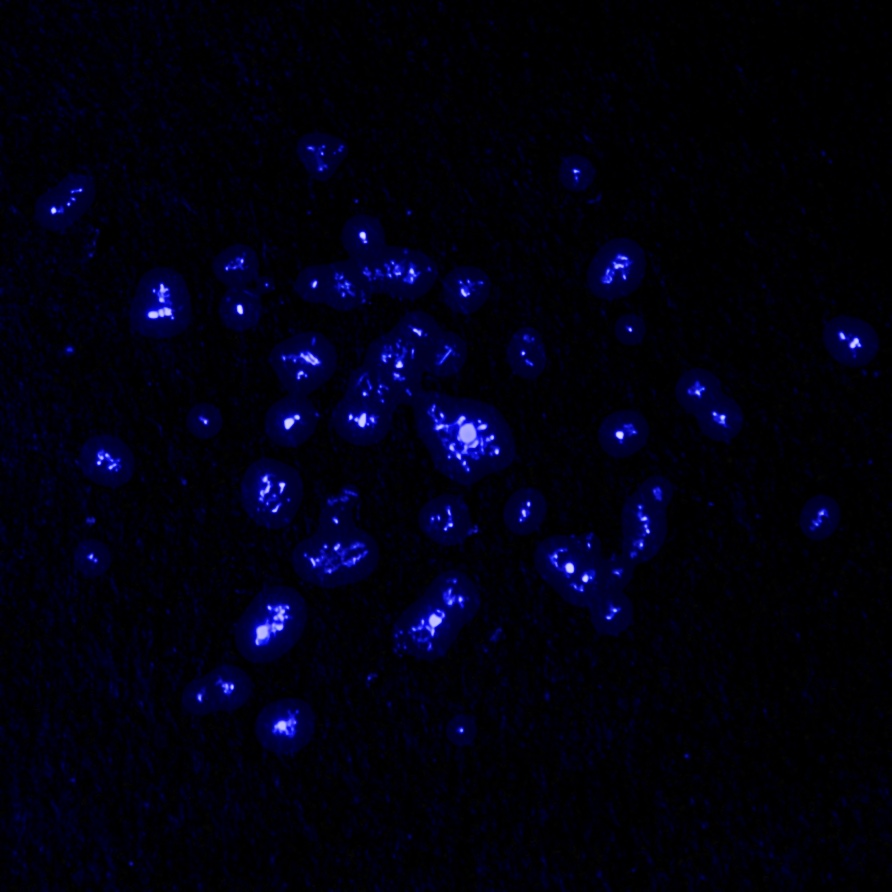Aktinium
89
Ac
Grupp
Ej tillämplig
Period
7
Block
f
Protoner
Elektroner
Neutroner
89
89
138
Generella Egenskaper
Atomnummer
89
Atommassa
[227]
Masstal
227
Kategori
Aktinider
Färg
Silver
Radioaktiv
Ja
From the Greek aktis, aktinos, meaning beam or ray
Kristallstruktur
Ytcentrerat kubiskt
Historia
André-Louis Debierne, a French chemist, discovered actinium in 1899.
He separated it from pitchblende residues left by Marie and Pierre Curie after they had extracted radium.
Friedrich Oskar Giesel independently discovered actinium in 1902 as a substance being similar to lanthanum.
He separated it from pitchblende residues left by Marie and Pierre Curie after they had extracted radium.
Friedrich Oskar Giesel independently discovered actinium in 1902 as a substance being similar to lanthanum.
Elektroner per skal
2, 8, 18, 32, 18, 9, 2
Elektronkonfiguration
[Rn] 6d1 7s2
Actinium glows in the dark with a pale blue light
Fysikaliska Egenskaper
Aggregationstillstånd
Fast
Densitet
10,07 g/cm3
Smältpunkt
1323,15 K | 1050 °C | 1922 °F
Kokpunkt
3471,15 K | 3198 °C | 5788,4 °F
Smältvärme
14 kJ/mol
Ångbildningsvärme
400 kJ/mol
Specifik värmekapacitet
0,12 J/g·K
Förekomst i jordskorpan
Ej tillämplig
Förekomst i universum
Ej tillämplig

CAS-nummer
7440-34-8
PubChem CID-nummer
Ej tillämplig
Atomära Egenskaper
Atomradie
-
Kovalent radie
215 pm
Elektronegativitet
1,1 (Paulingskalan)
Jonisationspotential
5,17 eV
Molvolym
22,54 cm3/mol
Värmeledningsförmåga
0,12 W/cm·K
Oxidationstillstånd
3
Användningsområden
Actinium is used as an active element of radioisotope thermoelectric generators, for example in spacecraft.
The medium half-life of 227Ac makes it very convenient radioactive isotope in modeling the slow vertical mixing of oceanic waters.
225Ac is applied in medicine to produce 213Bi in a reusable generator or can be used alone as an agent for radiation therapy.
The medium half-life of 227Ac makes it very convenient radioactive isotope in modeling the slow vertical mixing of oceanic waters.
225Ac is applied in medicine to produce 213Bi in a reusable generator or can be used alone as an agent for radiation therapy.
Actinium is highly radioactive
Isotoper
Stabila isotoper
-Instabila isotoper
206Ac, 207Ac, 208Ac, 209Ac, 210Ac, 211Ac, 212Ac, 213Ac, 214Ac, 215Ac, 216Ac, 217Ac, 218Ac, 219Ac, 220Ac, 221Ac, 222Ac, 223Ac, 224Ac, 225Ac, 226Ac, 227Ac, 228Ac, 229Ac, 230Ac, 231Ac, 232Ac, 233Ac, 234Ac, 235Ac, 236Ac